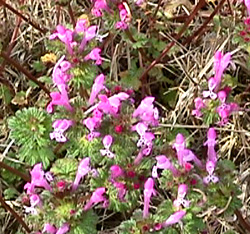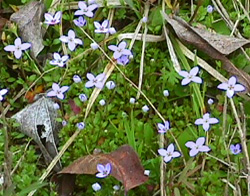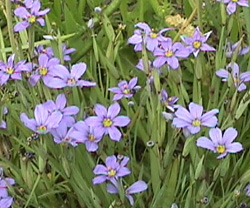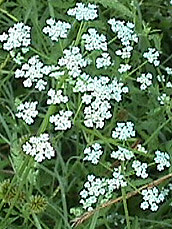
Henbit
(Lamium amplexicaule)
(January to March)
This European exotic is the first flower to bloom in the yard each year. It has established itself throughout North America. It is considered a weed in most lawns and gardens. However, since the plant dies with the coming of hot weather, it is not a problem in the summer and adds color to the yard when few other plants are growing, let alone blooming.



